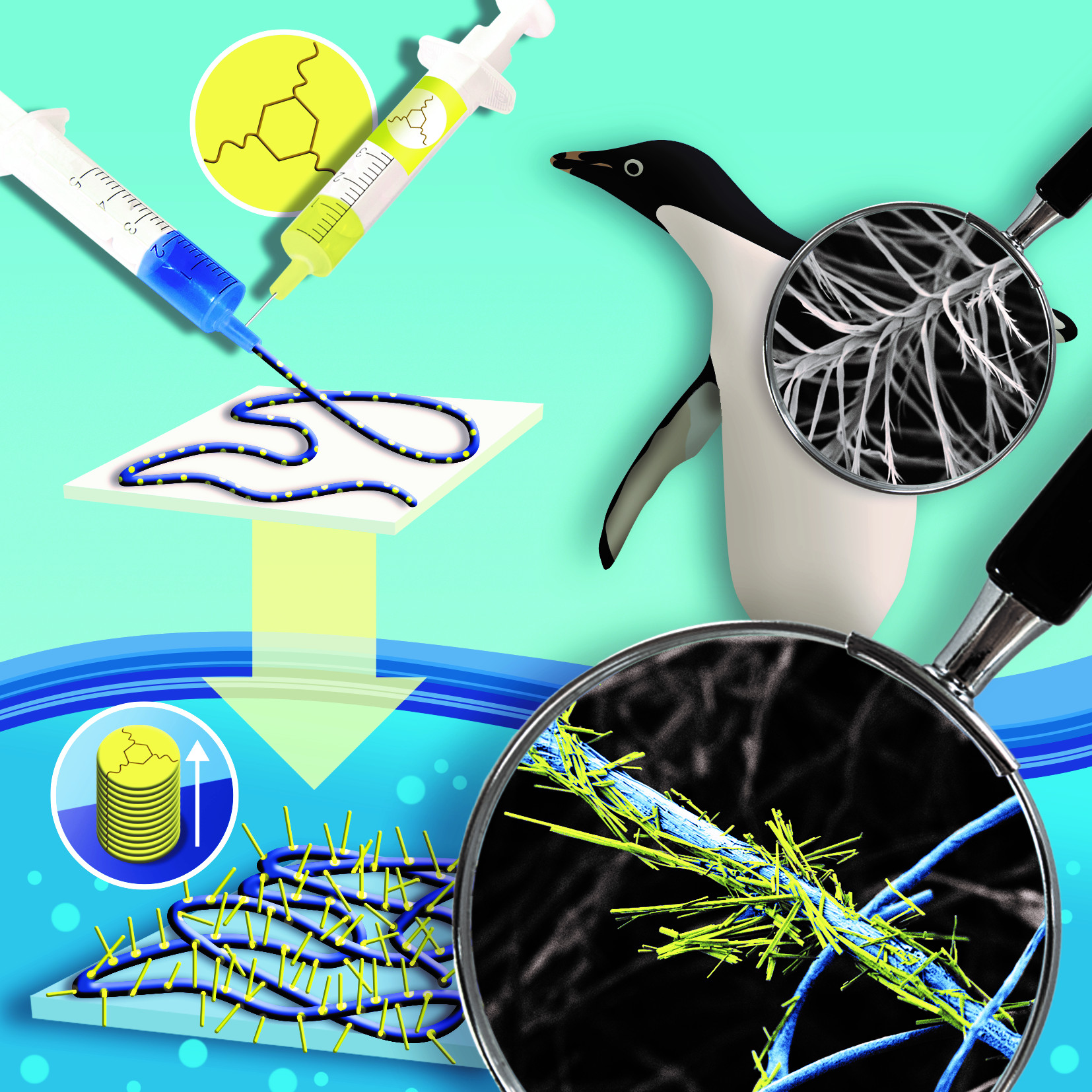News
New Paper: Mesostructured Nonwovens with Penguin Downy Feather‐Like Morphology—Top‐Down Combined with Bottom‐Up
11.07.2019
M. Burgard, D. Weiss, K. Kreger, H. Schmalz, S. Agarwal, H.‐W. Schmidt, A. Greiner
Adv. Funct. Mater. 2019, 1903166. doi: 10.1002/adfm.201903166

Polymer fibers play an important role in nature and technical systems. Fiber morphologies with off‐standing branches, as found in nature, e.g. in penguin downy feathers, provide unique properties but are unknown for man‐made polymer fiber systems. We discovered that it is possible to initiate seeded growth from trisamide seeded polystyrene fibers, prepared by core‐shell electrospinning, to form off‐standing supramolecular trisamide branches similar to penguin downy feathers but in polymer nonwovens and in nanoscale. Resulting mesostructured nonwovens show unique properties. For example, air filtration efficiency of 99.8% for the filtration of 0.3 µm aerosol particles, being significantly higher compared to neat electrospun polystyrene nonwovens as bench‐mark, showing only an efficiency of about 52.6%. Most remarkably, the pressure drop observed in filtration tests and thus, the energy consumption during filtration, did not increase up to a certain content of off‐standing supramolecular fibrils. This is a unique behavior, as higher filtration capabilities are typically connected to higher energy consumptions and pressure drops. Hence, branching electrospun fibers with supramolecular fibrils paves the way to new mesostructured nonwovens with unique morphologies, property profiles and applications in filtration, catalysis, and energy storage/harvesting, exploiting nature's concepts.

